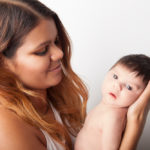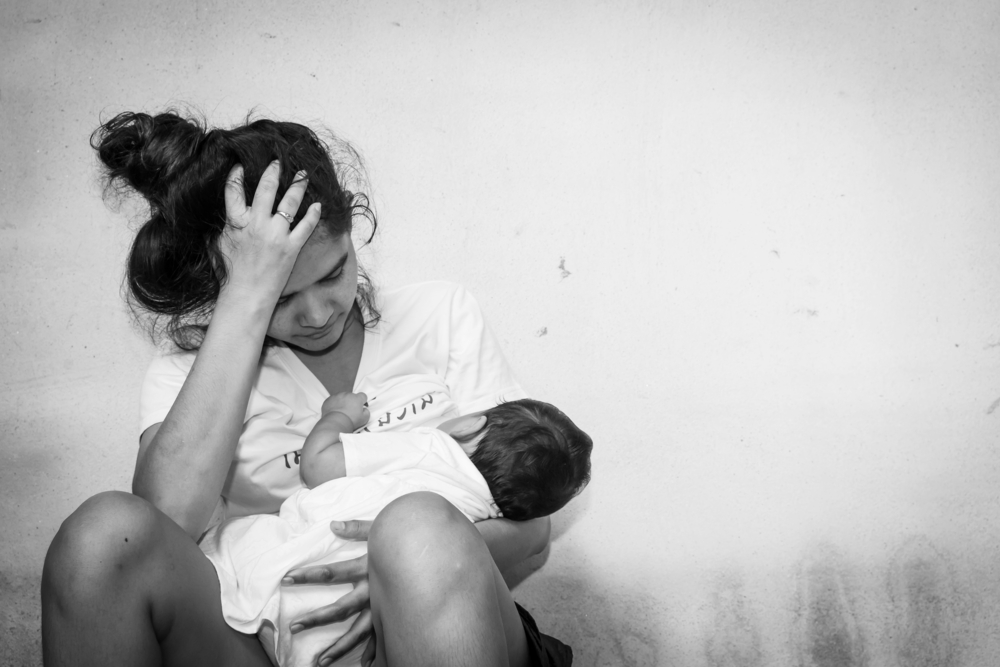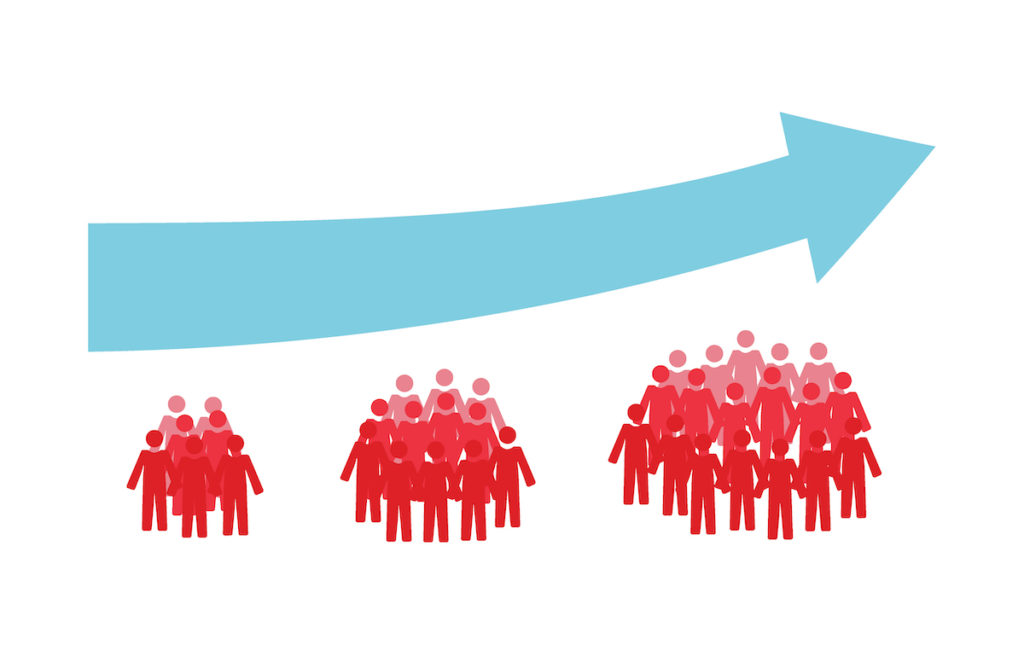
[Trigger Warning: this study investigated the prevalence of abuse].
In 2018 in England and Wales, 110,071 babies were born to women under the age of 25 (ONS, 2019). Much of the research on mental health in young mothers has focused on teenage pregnancies, due to the high risk of emotional and social problems they face. However, other women under 25 in the UK are also vulnerable: over one quarter will develop a Common Mental Disorder (CMD) such as depression, anxiety, or obsessive-compulsive disorder (McManus et al, 2016).
Lockwood Estrin et al (2019) aimed to quantify the prevalence of CMDs among pregnant women aged 16-24, and to examine any associations with adverse experiences such as social isolation and being the victim of abuse.

Are young adult mums more at risk of psychological and social problems?
Methods
The authors conducted a secondary analysis of data collected for another study (Howard et al, 2019). A cross-section of 545 patients were recruited at their booking appointment at a maternity service in South East London, where they had answered the Whooley questions which can be asked if depression is suspected (‘During the past month have you often been bothered by feeling down, depressed, or hopeless?’; ‘During the past month have you often been bothered by having little interest or pleasure in doing things?’). All patients answering “yes” to either question, and a random sample of 1 in 6 women answering “no” to both were invited to participate.
Selected parts of the Structured Clinical Interview for DSM-IV-TR (SCID Research Version) were administered to determine if patients met the criteria for mood episodes and disorders, anxiety disorder, eating disorders, and “borderline personality disorder”. Current or past thoughts of self-harm were identified with the Edinburgh Postnatal Depression Scale and the SCID interview respectively. A composite measure was used to identify women who had been the victim of abuse: relevant questions formed part of the SCID PTSD module, and patients were also asked to complete the Composite Abuse Scale – Short, and the Post-Traumatic Stress Disorder Scale.
Statistical analysis
As the authors wanted to calculate population prevalences but their sample selection was biased, sampling weights were used to compensate for this. Complete case analysis (i.e. excluding missing data) was used to examine differences in social and clinical variables between the over and under-25s. Multivariate analyses were used to examine the association between age and CMDs with additional adjustments for the other variables of interest to examine their contribution. Sample proportions, weighted prevalences, odds ratios (OR), and 95% confidence intervals (CI) were reported. Twenty-one participants declined to complete the PTSD module of the SCID, so sensitivity analyses were used to estimate the effects on the data if all women had met the criteria for PTSD, and if all did not.
Results
Of the 545 women in the study, 57 were aged under 25 and 488 women were over 25. Only 6 participants were under 19. The weight population prevalences reported that women under 25 were significantly more likely to be: Black African/Caribbean or Black British (63.3%), live alone (24.2%) or with parents (31.9%), be of no fixed abode (10.7%), not in a relationship (34.1%), to have an unplanned pregnancy (65.9%), be unemployed or unable to work (35%), and have household income under £15,000 per year (74.7%).
The population prevalence for meeting the criteria for any SCID diagnosis was 67.2% in women under 25, compared with 21.2% in women over 25. The majority of these diagnoses were “Common Mental Disorders” (45.1% in under 25s), mostly depression (21.7%) and anxiety (25%). A smaller number of young women were diagnosed with PTSD (calculated population prevalences 2.6%), OCD (1.1%), eating disorder (0.8%), and “borderline personality disorder” (1.1%). The research team calculated that in the population of pregnant women under 25, 38.9% had experienced abuse in their lifetime, and 22.9% of women over 25. A higher prevalence of young women had experienced intimate partner violence (19.5% vs 6.2%), sexual violence (11.1% vs 4.6%), and abuse as a child (11.2% vs 5%).
The multivariate analyses found that younger women were at significantly greater odds of having a CMD in pregnancy than women over 25 (after adjusting for confounders, OR = 5.8, 95% CI 1.8 to 18.6, p = 0.003). Having a CMD was associated with living alone but not ethnicity or unemployment. Being the victim of abuse was non-significantly associated with having a CMD (aOR 1.5, p = 0.251), however this association became stronger if the data missing from the PTSD measures was assumed to be due to having this experience (aOR = 2.1, p = 0.020).
Conclusions
Pregnant women aged 16-25 are at higher risk of mental disorders, especially common mental disorders (CMD), than those over 25. CMDs in under 25s were also associated with living alone and being the victim of abuse.

Younger mums are more likely to suffer from mental disorders and have less social stability.
Strengths and limitations
- As the authors themselves concede, it is difficult to generalise the results of their study when only 57 women were in the age range of interest. This is a small number for a study that aims to extrapolate conclusions about the prevalence of diagnoses in the general population, and is due to the fact it is an analysis of data that might not have been originally intended for this purpose. Ideally a larger cross-sectional survey could have been conducted to increase the accuracy of the estimates, but sample weighting is a commonly used and accepted statistical method for managing sampling bias.
- In addition, the participants included many vulnerable women who disclosed mental health problems and trauma as part of the study, and the link between the researchers and the antenatal clinic would have been vital to ensure these women could go on to receive the help they needed.
- The authors noted that interestingly CMDs were not linked with education or unemployment and this was contrary to previous research. They speculated that this could be due to young women facing discrimination at work once they become pregnant. This null finding could also be false however, and be due to small sample size.
- Finally, the fact that over two-thirds of younger women met criteria for a diagnosis may raise concerns about over-medicalisation.

It is difficult to generalise the results of this small study. A larger cross-sectional survey is needed to replicate these results.
Implications for practice
This study suggests a need for increased resources for young pregnant women to be made available up to the age of 25, to ensure that common mental disorders are treated and outcomes for the family are optimised. Many charities for teenagers and young people have already extended their services to this upper age limit, however the Royal College of Psychiatrists’ parliamentary briefing earlier this year highlighted that mental health services have yet to embrace this new approach (RCPsych, 2019). This work also highlights the necessity of the recent expansion of perinatal psychiatry services for crucial specialist support. Most importantly, this study shows the appallingly high rates of abuse experienced by women of all ages, and gives pause for thought about how few resources psychiatry has to offer the victims.

This study shows the appallingly high rates of abuse experienced by women of all ages, and gives pause for thought about how few resources psychiatry has to offer the victims.
Conflicts of interest
I am the recipient of an NIHR Academic Clinical Fellowship. I have no other funding or any connections with the authors of this paper. I am a member of the Northern Centre for Mood Disorders Executive Committee.
Follow #ESMI on Twitter
Follow #ESMI today on Twitter for all of the updates from the ESMI (Effectiveness of Services for Mothers with Mental Illness) stakeholder event.
Links
Primary paper
Lockwood Estrin, G., Ryan, E., Trevillion, K., Demilew, J., Bick, D., Pickles, A., & Howard, L. (2019). Young pregnant women and risk for mental disorders: Findings from an early pregnancy cohort. BJPsych Open, 5(2), E21. doi:10.1192/bjo.2019.6
Other references
Howard LM, Ryan EG, Trevillion K, Anderson F, Bick D, Bye A, et al. The accuracy of the Whooley questions and the Edinburgh Postnatal Depression Scale in identifying depression and other mental disorders in early pregnancy. (2018) British Journal of Psychiatry; 212: 50 –6.
McManus S, Bebbington P, Bebbington R, Brugha T. (2016) Mental Health and Wellbeing in England: Adult Psychiatric Morbidity Survey 2014. NHS Digital.
Office for National Statistics (2019). Dataset: Births in England and Wales: summary tables. [Accessed 1st September 2019]
Royal College of Psychiatrists (2019). Children and young people with mental health problems and access to NHS treatments. 30th January 2019. [Accessed 1st September 2019]

Absolutely fascinating article. I think the field is changing with regards to the aetiology and environmental factors that are normally associated with mental health disorders. This article will contribute immensely to further research; exploring other biological, social and environmental factors :)